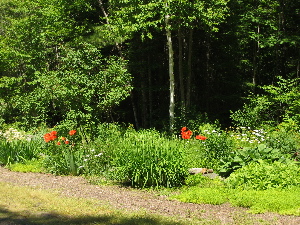PLANTING AND CARE OF PAPER-WHITES
I get email letters from White Flower Farm in Connecticut often. The last one arrived with this article. I thought it was VERY appropriate for all of us right now when we might be thinking of potting up some Paper-whites. The directions are clear and concise. Enjoy!
"When your Paper-whites arrive, open the bags right away to allow air to reach the bulbs. You can either pot them immediately or store them in a dark place at room temperature for 4-6 weeks. If you receive a bag of 24 bulbs, consider potting 6-12 bulbs at 2- to 4-week intervals for a staggered display. Bulbs generally bloom 4-6 weeks after potting.
After planting in a pot or one of our soil-less kits, set your Paper-whites in a cool place (50-60°F is ideal) away from direct sunlight. Check the bulbs frequently and water thoroughly when the potting mix is dry 1 inch below the surface (but not more than once a week until the bulbs begin active growth), or when the water level is more than an inch below the stones in a vase.
If your bulbs are in a bowl (or a pot without a drainage hole), water with extra care: Bulbs sitting in soggy potting mix soon rot. Once a week, tug gently on the bulbs to see if they have begun to product roots. When your tug meets with firm resistance (usually about 3 weeks after potting), move the container to a sunny window. Keep a close eye on watering. Bulbs in active growth can dry out in just a day or two.
Our indoor spring bulb collections arrive potted, with a layer of protective Spanish Moss on top. Cut and remove the rubber band that holds the Spanish Moss in place. You may discard the Moss, or use it as a decorative element (as the bulbs grow, rearrange the Moss so that it does not become tangled in the foliage). Bulbs usually begin blooming in 4-5 weeks.
Place the pot where it will receive 6-8 hours of direct sun every day and water when the potting mix is dry to the touch. It’s a good idea to remove the pot from its basket before watering.
A cool room with daytime temperatures below 70°F and nighttime temperatures about 50-55°F, such as is found near a window, is ideal for our indoor bulb collections. Please note that the growth of the bulbs will be slower in a cooler part of the house. Warmer temperatures may speed growth, but can result in weaker flowering stems."




